
Planning on moving abroad with your pets? But aren’t sure where to start? Don’t worry, I’ve been there, done that, and I’m here to help you sort it all out!
Moving overseas can be a complicated task on its own, but moving overseas with pets is even more complex!
From vaccines to quarantines, health certificates, travel crates, airline requirements, and shipping fees – there’s a lot to do and a lot to keep track of. Believe me, I get it!
I moved with my dog to Japan a little over a year ago and was completely overwhelmed by all of the paperwork and steps involved. In fact, moving my pup was the stressful part of my entire journey to Japan.
Thankfully, with a lot of patience and even more time and research, I was able to figure it out. And now, I’m here to share it all with you!
Whether you’re moving just across the border or to the other side of the world, I’ve got you covered.
So, without further ado, let’s dive in and discuss the best tips for moving abroad with pets.
Moving Abroad with Pets: Important Tips for Pet Owners
Here are some of my most important recommendations to keep in mind when moving abroad with pets.
Start Researching Pet Import Laws ASAP

My furbaby, Scotty, in his Japanese Halloween costume!
It’s never too early to start researching travel requirements if you plan on transporting pets overseas. Because, truth be told, some of this stuff can take several months to complete.
When I moved to Japan, the process of getting my dog here was incredibly long and complicated. Mainly because Japan requires a six-month quarantine – yes, you read that right, six months!!
And while this quarantine can be completed before moving, it still requires substantial planning and preparation. Especially when you factor in all the steps (think vaccines, blood tests, etc.) that have to happen first.
So, needless to say, moving pets abroad is a complex process – one that involves a lot of paperwork and even more patience.
This is why, my number one tip is to start researching everything as early as possible.
Once you even start thinking about moving overseas, look into the pet import laws for the country you intend to move to and come up with a game plan.
Also, be sure to pay special attention to the small details.
For example, Japan requires that all signatures be signed in blue ink. If your paperwork is signed in any other color, it won’t be accepted.
Now, I’m not saying that every country will be as strict as Japan is. But the point is every country does have requirements and it’s important to be aware of them as early as possible!
Pro Tip: If you’re moving from the US to another country, be sure to check out this USDA website on pet travel. It provides all the basic information you need to know before transporting your pet overseas.
Carefully Compare Airlines & Pet Shippers
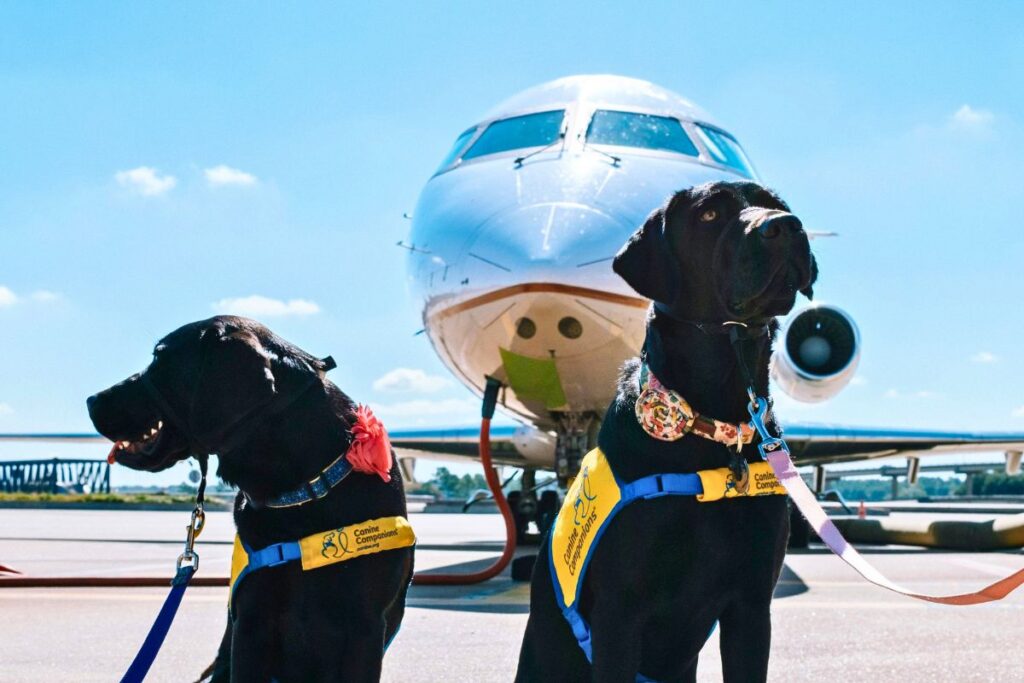
Photo by Jeswin Thomas via Unsplash.
Unless you’re moving somewhere within driving distance, chances are your pet will wind up on a plane as you transit to your new home.
If that’s the case, then there are three main options for you to consider – your pet can either fly aboard a commercial flight, on a private plane, or they can be flown by a pet relocation company.
Each option comes with its own advantages and disadvantages. So, it’s best to thoroughly research and compare every possibility to determine which one will work best for you.
Factors that you’ll need to keep in mind include the type of pet you plan to move with, the size of your pet, and the relocation costs involved.
Commercial Airlines

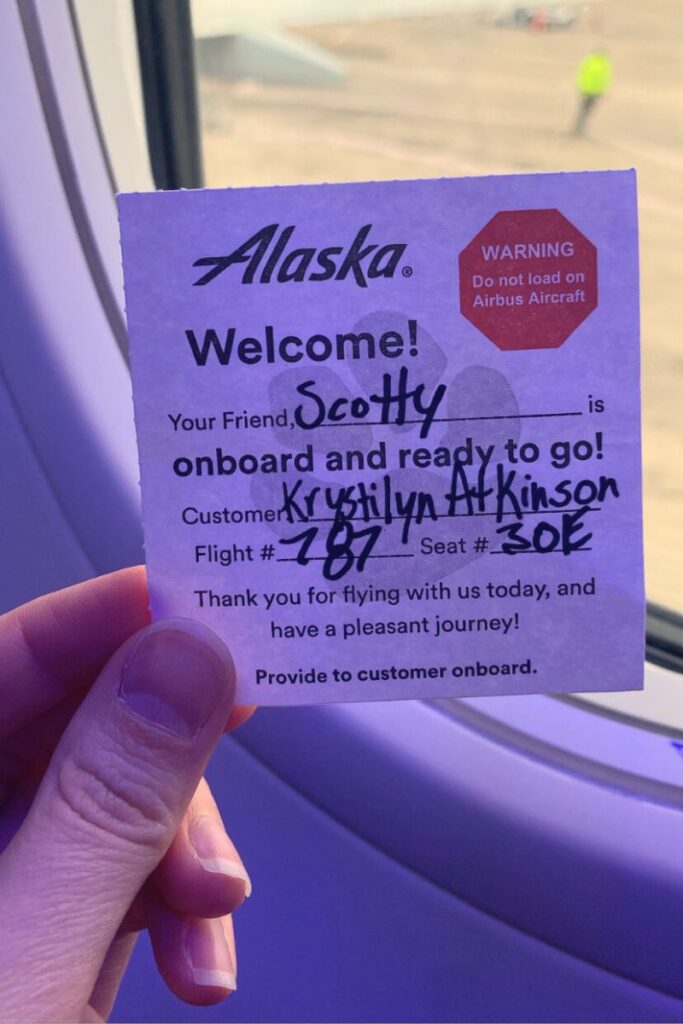
Generally speaking, commercial airlines are going to be your most affordable option. However, they’re also going to be the most strict when it comes to transporting pets.
If you’re trying to travel with an extra large pet, an exotic animal, a very young puppy, or a snub-nosed cat, for example, you’re going to have a harder time finding an airline that will work with you.
However, if you’re traveling with a healthy average-to-small-size dog or cat, your pet should be able to fly commercially, either with you in the cabin or in the cargo hold.
Below, I’ve included typical requirements for both options. However, these can vary greatly from airline to airline.
As such, it’s always best to check directly with your specific airline to determine their particular guidelines and requirements.
In-Cabin Requirements
Most policies that I’ve seen regarding in-cabin pets allow for a maximum weight of 17-20 pounds (crate included).
In addition to this, the carry-on crate typically needs to be able to fit under the seat in front of you. And, your pet should have enough room in their crate to comfortably move around.
When you go to check in, the agent at the counter will confirm that your pet meets all of these requirements. If, for some reason, they don’t, your pet could be denied boarding.
Given this, it’s always best to double-check with the airlines and confirm that your pet is eligible for in-cabin transport.
Side Note: If you’re flying with a fully-trained certified service animal, your pet can typically travel in the cabin with you regardless of weight or size. Just be sure to check directly with the airline beforehand and provide any requested paperwork as needed.
Cargo Requirements
The cargo hold can typically accommodate pets that are much larger, however, there is a limit to this as well.
Again, maximum weights can vary depending on the airline, but the standard that I’ve seen is around 100 pounds (crate included).
In addition to this, airlines typically have very strict guidelines regarding the type of crate that can be used. So it’s important to pay close attention to ensure that you purchase an approved travel carrier.
It’s also worth mentioning that some airlines may implement pet embargos from time to time, which prevents the transportation of pets in the cargo hold.
This most often happens in the summer, when temperatures are too hot for pets to safely travel. However, it may also happen in locations where temperatures get too cold.
You’ll definitely want to keep this in mind when scheduling your flights. Especially if you plan to transport your pet as cargo.
Pet-Friendly Airlines
As you do your research, you’ll quickly discover that not all commercial airlines are pet-friendly.
Some don’t fly pets at all. Meanwhile, others only transport small pets in-cabin. And some only cater to active duty military.
To help you narrow down your search, here are some of the most pet-friendly airlines that I’ve come across: Alaska Airlines, American Airlines, Air Canada, Hawaiian Airlines, Japan Airlines, and Air France.
I personally traveled with my dog in cargo on Alaska Airlines and had a good experience.
I’ll admit, I really would have preferred to have him fly in-cabin with me. But, he was just over the weight limit, so that wasn’t an option for us.
The whole situation made me a bit nervous at the time, but the staff did everything they could to help me feel at ease. And, as a pet owner, I really appreciated that.
Private Planes
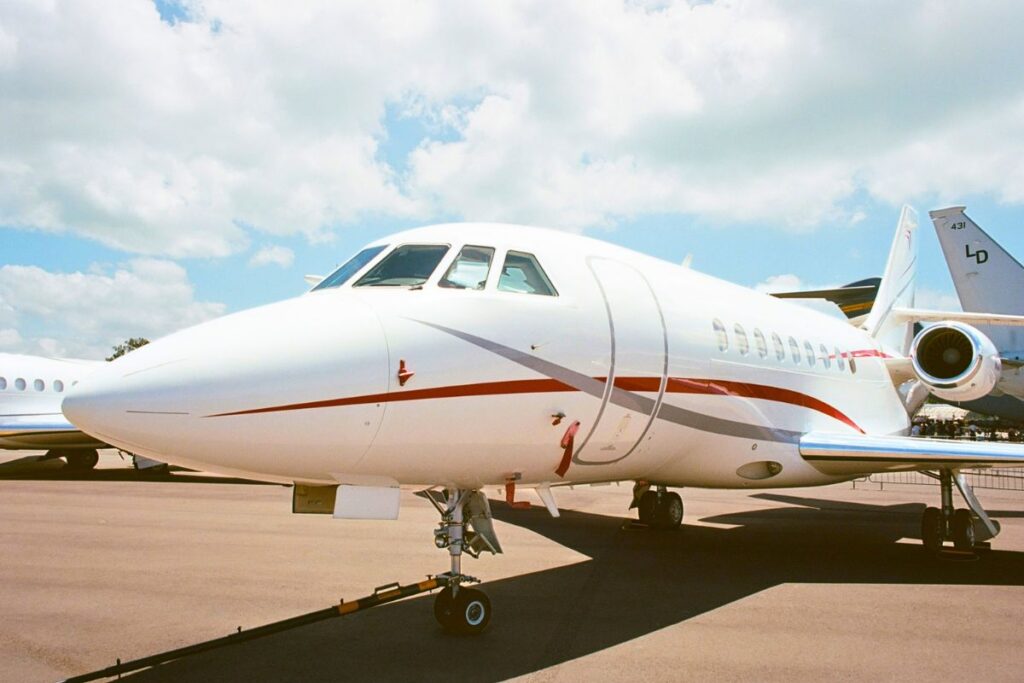
Photo by Timothy Newman via Unsplash.
I know what you’re thinking – a private plane is too expensive. And while that is true to a certain extent, there are a few workarounds for pet owners.
A new company, K9 Jets, is changing the game by offering shared private jets specifically for pet owners.
Although destinations are limited at the moment, they do allow pets of all shapes and sizes to fly in-cabin next to their owners.
You simply book and pay for however many seats you need. And, as long as enough four-legged friends travel the same route, you’re good to go.
Alternatively, there are also Facebook groups, like Chartered Air Travel With Pets, where pet owners can link up and book a private jet together.
Or, if you have the extra cash, and prefer to fly in your very own private jet, you can always book with a pet-friendly company like Private Jet Charter.
Pet Shipping Services

Photo by Erda Estremera via Unsplash.
Last, but certainly not least, there are pet relocation companies that will transport your pet for you to destinations all across the globe.
These companies specialize in animal shipping and can be a great source of support if it’s your first time moving abroad with pets.
While specific services vary, most companies offer door-to-door transportation of your pet, completed documentation and compliance, as well as 24/7 monitoring.
I’ve personally never utilized a pet relocation service, so I can’t fully speak to the experience.
However, I know many people who have gone this route. And they’ve been very happy with the results.
Just keep in mind that pet relocation services can be quite pricey, especially if you’re transporting a very large or exotic pet.
Be Strategic About Your Flight Itinerary

Photo by Matthew Smith via Unsplash.
If you decide to fly your pet commercially, you’ll want to be as strategic as you can with your flight itinerary.
Ideally, you want as few layovers as possible, and you want to get there as quickly as you can.
Or, if layovers are inevitable, consider stopping mid-way to give your pet a break.
Doing this will help to reduce the anxiety and stress of traveling that your pet is likely to experience.
When I moved to Japan, I flew from Charleston, South Carolina directly to Seattle, Washington.
In Washington, I opted for a long layover. And I spent a few days there to give my pup a break before heading on to Japan.
I did this because both legs of our flight were quite long and it was his first time flying. So, the thought of taking him directly from one plane to another was overwhelming.
Pro Tip: You’ll likely need to obtain a health certificate for your pet before flying (more on that below). In the US, this certificate is typically only valid for 10 days. So, be mindful if you decide to do a long layover.
Book Your Flights Early & Call to Confirm Everything
Pet spots on flights, especially commercial flights, are limited and fill up quickly. Given this, it’s always best to book everything as early as you can.
And when you do so, don’t just do it online. Call and speak with someone in person to confirm everything.
Confirm that your pet spot is reserved. And walk through all of their requirements to ensure that you’ve got a handle on it.
Because, honestly, the information that they put online can be confusing and contradicting at times. So it’s always best to call and confirm everything!
Schedule Your Health Certificate in Advance
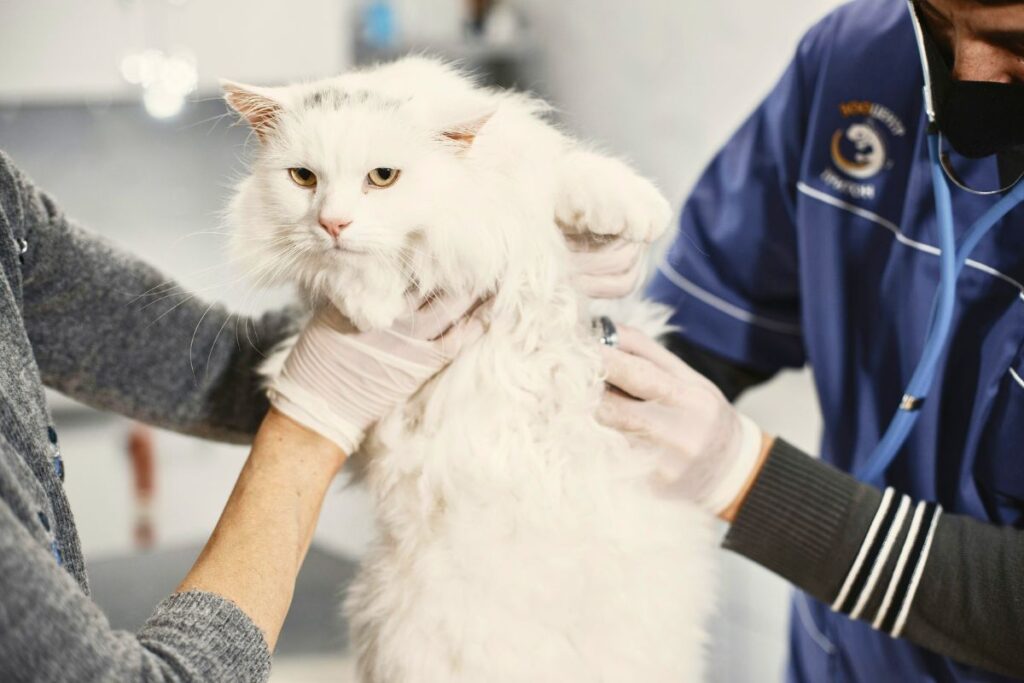
Photo by Gustavo Fring via Pexels.
As mentioned above, you’ll likely need a health certificate of some kind when moving internationally with pets.
This form, which must be completed by a USDA-accredited vet, basically states that your pet is healthy enough to fly. And verifies that they don’t have any transmissible diseases.
A lot of times, this form is required by both airlines and individual countries. So it’s best to check with both to ensure you have everything you need.
Also, be aware that this form has a limited validity period. While this can vary based on the airline and destination country, for most US-based airlines, the certificate is only valid for 10 days.
This means that you need to arrive at your final destination within 10 days of the certificate’s completion.
Given this, I recommend scheduling your health certificate appointment as close to your departure date as possible.
But also be sure to book your appointment in advance. This helps to ensure that you get your health certificate on the day you actually want and/or need it!
Be Cautious When It Comes to Anxiety Meds
I know a lot of people use anxiety meds to help comfort their pets during flights. And I, in fact, wanted to do the same for my dog.
However, my vet advised against it and made me realize that it’s not always the best idea.
See, the thing is, we know how pets will react to drugs on the ground. But we don’t know how they will respond when they are at altitude.
This is especially worrisome if your pet is flying in cargo because they’re not being monitored – nobody has eyes on them. So, you won’t know if something has gone wrong until you land.
On top of this, many airlines have strict guidelines when it comes to medicating pets. And some will go as far as to refuse service to animals that appear to be too sedated.
Given this, I personally opted to forgo the anxiety meds.
As much as I wanted to use them to help calm my pup, it just didn’t seem like it would be the safest option for his health.
That being said, every situation is different and every animal is different. So, be sure to consult with your vet and work together to decide what is best for you and your furry friend.
Desensitize & Expose Your Pet to Their Travel Crate
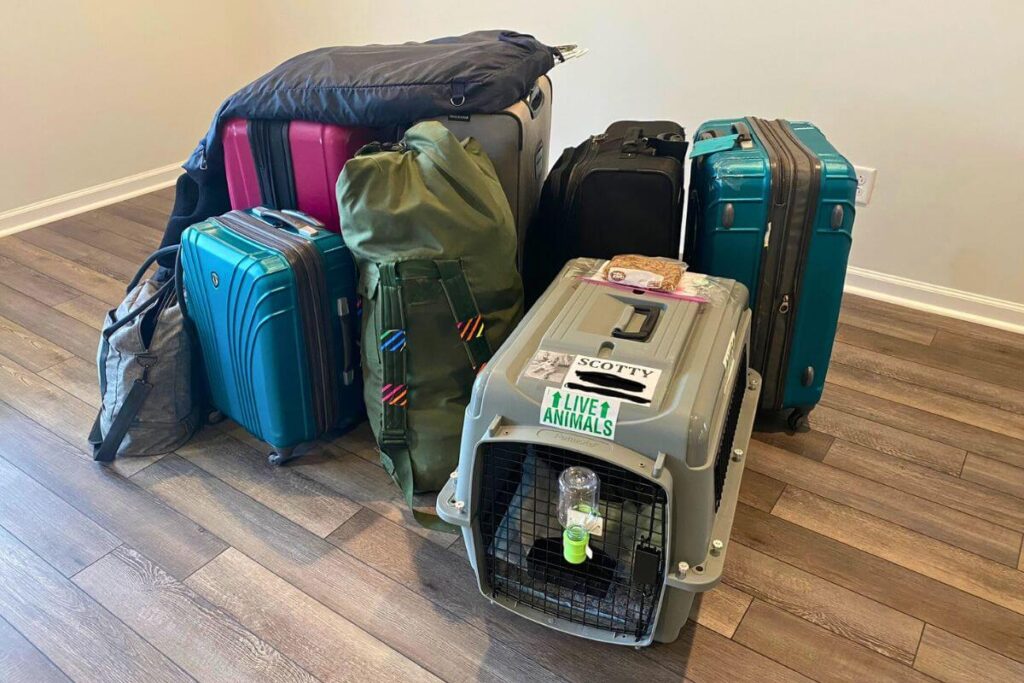
One thing that you’ll definitely want to do early on is purchase your travel crate. And then give your pet plenty of time to get used to it.
They’re going to be in there for awhile. So, it’s best if they view their crate as a familiar and comfortable environment.
Load it up with blankets, fill it with their favorite toys, put treats in there – basically do anything you can to create positive associations with the crate.
This will go a long way in easing your pet’s anxiety on the day of your flight. And will make things easier for you as well.
Invest In a Tracking Collar
It may also be worth it to purchase a tracking collar.
While I didn’t have one per se, I did attach an AirTag to the top of my dog’s crate when he flew in the cargo hold.
This definitely helped to ease my anxiety and made me much more comfortable with the entire process.
That being said, in retrospect, it probably would have been even better to use a tracking collar, in the event that he escaped from his crate.
Thankfully, that didn’t happen. But it’s something that I will certainly be considering in the future.
And I highly recommend that you do the same – just in case your pet ends up somewhere it shouldn’t be while in transit.
Keep In Mind: Not all tracking devices work in all countries, so be sure to do your research. For example, AirTags don’t work in South Korea. I learned this the hard way when I went on vacation to Korea and became convinced that the airline lost my luggage!
Prep Your Dog the Day of Your Flight

On the day of your flight, there are a few things you can do to try and make your pet’s experience a bit more comfortable.
For example, you can play with them – a lot! Not only will they love this, but it will also tire them out. And if they’re tired, they’re more likely to sleep on the plane.
In addition to this, you’ll want to make sure you feed them within 4 hours of check-in. This will help satiate their hunger, and will also allow them enough time to properly digest things before take off.
Along those same lines, be sure your pet has ample opportunities to relieve themselves before the flight. Take them on long walks and do one last quick potty break right before you enter the airport.
In regards to water, feel free to do as you normally would. But definitely be sure to have some on hand during the flight.
If you’re flying your pet in-cabin bring bottled water and a small dish with you.
Meanwhile, those in cargo will need to have a water dispenser attached to their crate. To ensure the water lasts longer – and doesn’t spill – you can try freezing some the night before.
You’ll also want to line your pet’s crate with absorbable training pads, just in case any accidents occur while in flight.
Pro Tip: Have lots of snacks and food on hand, in the event that you get stuck somewhere while in transit! And if your pet is flying in cargo, attach a small bag of extra food to the top of their crate.
Stay Organized & Keep All Paperwork on Hand
There’s a lot of paperwork that you’ll need to keep track of. So it’s best to have it all organized and tucked away somewhere safe – but also accessible on your day of travel.
I recommend making several copies of your most important documents (health certificate, import paperwork, etc.), to give out as required.
I also attached photocopies of all my pet’s paperwork to the top of his crate. That way, it was there in case it was needed while in transit.
That being said, I do have one word of caution here. Be sure that you don’t accidentally give away any original signed documents! You’ll want to have those on hand when you land at your final destination.
Don’t Forget About Self-Care

Photo by Shashi Chaturvedula via Unsplash.
Moving abroad is stressful enough on its own. But moving abroad with pets can be even more anxiety-ridden.
There’s just too much to keep track of, too much to worry about – it’s a lot.
So, don’t forget to take care of yourself. Whatever you need to do to ease your mind, do it.
If that’s a session of yoga or meditation, a run, a glass of wine here and there, or the occasional nap – do it.
The calmer you are, the calmer your pet will be, and that makes things easier for everyone involved.
Other Considerations to Keep in Mind
Before you make any travel arrangements for your pet, there are a few factors that you’ll want to take into consideration first. As much as you may want to move abroad with your pet, in some cases, it unfortunately may not be possible – or it might be much more difficult to achieve.
Type of Pet

Snub-nosed pets, like pugs, have a harder time flying. Photo by Karin Hiselius via Unsplash.
Generally speaking, it’s much easier to move abroad with a dog or a cat than it is with other types of animals.
Not to say that it’s impossible, but you may need to jump through more hoops to make it happen. Especially if you’re traveling with a more exotic pet.
In addition to this, the breed of your pet, especially if you have a dog, can play a big role in your travel abilities.
There are several countries around the world that have banned certain dog breeds. So, you’ll want to do a bit of research beforehand to make sure your dog is allowed to go in the first place.
Typical breeds that are most restricted include pitbull terriers, American Staffordshire terriers, Japanese tosas, rottweilers, and wolf-hybrids, among others.
You’ll also want to be careful if you own a brachycephalic or snub-nosed pet.
Inclusive of both cats and dogs, these types of pets typically have shorter noses. This means that they are more prone to respiratory illnesses and more sensitive to changes at altitude.
Because of this, many commercial airlines refuse to transport snub-nosed pets altogether. While some may only allow them to fly in-cabin, if they’re small enough.
Common dog breeds that are flagged by the airlines for this include French bulldogs, pugs, shih tzus, and Boston terriers, among others.
Meanwhile, typical snub-nosed cat breeds include Persians, Himalayas, Burmese, and British shorthairs.
If you plan to move abroad with a snub-nosed pet, you’ll want to pay close attention to airline regulations. And be open to alternative methods of transportation.
Length of Move
Traveling and moving overseas is incredibly stressful for animals.
So, if you’re only going abroad for a short period of time, it may not be worth it to bring your pet.
You’ll want to weigh the pros and cons for yourself. But if your move is temporary, I personally recommend leaving your pets at home.
Find someone who can take care of them while you’re gone. And enjoy the freedom that comes with a temporary pet-free life.
Health of Pet

Elderly and/or sick pets may be unable to travel. Photo by Noah Moquin via Unsplash.
The health of your pet is another big factor that you’ll want to take into consideration before moving abroad.
Simply put, if your pet isn’t healthy enough to travel, then they won’t be able to move with you. And there’s no way around this.
Almost all airlines (whether you’re flying privately or commercially) require some sort of health certificate from your vet. As do, many countries that allow pet importation.
The last thing anyone wants is for a pet to pass away or become severely sick during travel.
They do this to protect the health and well-being of animals. So, as disappointing as it may be, it’s probably for the best.
Transportation Costs
Last, but certainly not least, you’ll want to take into consideration the costs involved when moving abroad with pets.
I’ll be honest, transporting animals internationally is not cheap. There are a lot of fees and a lot of expenses and they all add up quickly.
This is especially true if you’re traveling with a large pet, multiple pets, and/or exotic pets.
Whatever your specific situation is, you should be prepared for the expenses involved. This means collecting quotes, crunching the numbers, and budgeting it all out.
Ultimately, you want to make sure that it’s financially feasible for you to move abroad with your pet.
Moving Abroad with Pets: US Military Service Members

Photo by Martin Castro via Unsplash.
I want to take a minute to highlight some of the special considerations and exemptions that are available for active duty US military service members.
For those who are moving overseas on official orders, there are several programs available that can assist with the transportation of pets.
In fact, many US-based commercial airlines, even those that don’t normally cater to pets, have options in place for military personnel.
For example, Delta typically doesn’t allow pets to travel in the cargo hold. However, if you’re eligible for a military exemption, they will let you check your pets as excess baggage.
Many airlines also offer discounted pet fees. As do many pet shipping companies.
In addition to this, the government has passed a new military pet transportation policy that allows for the reimbursement of expenses related to pet travel.
For those traveling within the US, reimbursement of up to $550 is available. And up to $2,000 is available for moves outside of the contiguous US.
Frequently Asked Questions About Moving Abroad with Pets

Here are my thoughts on some commonly asked questions about moving with pets overseas.
How Hard Is It to Move Pets Overseas?
Moving abroad with pets is certainly not for the faint of heart. There’s a lot of work, a lot of preparation, and a lot of paperwork that goes into it. But it’s not impossible to achieve. In fact, people do it every day! Just be patient, start planning early, stay organized, and take it one step at a time. Before you know it, you’ll be living abroad, fully embracing the expat life with your furry (or not-so-furry) friend by your side!
Can Pets Fly In-Cabin Internationally?
Yes, small pets can fly in-cabin on international flights with certain airlines. However, this is mostly limited to cats and dogs. So, if you’re traveling with another type of animal, you may have a more difficult time finding an airline to work with.
What Is the Maximum Size for a Dog on an Airline?
Weight limitations for dogs can vary from airline to airline. However, most commercial flights allow pets up to 100 pounds (crate included) to fly in the cargo hold. Meanwhile, in-cabin requirements usually fall around 20 pounds (again, crate included). Private planes, on the other hand, typically offer much more flexibility and can transport pets of all sizes.
How Do I Move to Another Country With a Big Dog?
Moving overseas with a large dog is going to be more difficult and costly, but is doable, nonetheless. If your dog weighs more than 100 pounds (in their crate), they won’t be able to fly with many commercial airlines, if any. So, you’ll need to consider alternative methods of transportation. Your best bet is to hire a pet shipper or try to travel on a shared private jet. Both of these options have the ability to accommodate large dogs.
Is It Safe for Dogs to Fly in Cargo?
I’ll be honest, there are definitely risks involved when pets fly in cargo. But, it can be done safely, if you and the airline work together to make it so. The biggest piece of advice I have for this is to communicate with the airlines often and early to ensure you’re both on the same page. Make sure you’re up-to-date on their rules and regulations and check in with them throughout your travel day(s) to confirm the wellbeing of your pet.
Additionally, and just as important, avoid traveling when weather conditions aren’t ideal. Most accidents happen when it’s too hot or too cold outside. So, try to travel during the spring or the fall when temperatures aren’t too extreme.
And, as stated above, take your pets’ health limitations into consideration. If your pet has a medical conditional that could act up during the flight or if they experience severe anxiety, the cargo hold may not be the best place for them.
Final Thoughts: Moving Abroad with Pets
So there you have it – my top recommendations for moving abroad with pets. I hope this article is helpful in planning your own move overseas.
Just remember to be patient with the process, take it one step at a time, and breathe. It’s a lot of work, but it’s doable – and definitely worth it in the end!
Are you planning on moving abroad with pets? What are you most worried about? Let me know in the comments below!
Enjoy this post about moving pets overseas? Pin it now for later!






Awesome tips to move your pet abroad. A comprehensive guide indeed!
Thank you! I’m glad you found it helpful!
I wish they would make traveling with pets easier. They are a part of our family!
I agree! There are definitely ways that they could make the process easier – but with patience and determination, it’s still doable!
Pingback: Moving Abroad with Pets? Here's How Pet Relocation Services Can Help
Thank you Kristi for this helpful info! My wish is that an entrepreneur will recognize the need for an airline that understands the needs of travelers with pets. Seems like a wide open, niche market! Happy travels!!
Yes, I agree!! I think more companies are starting to recognize and offer services for pet-friendly flights – but they all seem to be very regionally based. It would nice if there was a reliable company that offered routes internationally – maybe in time we’ll get there!